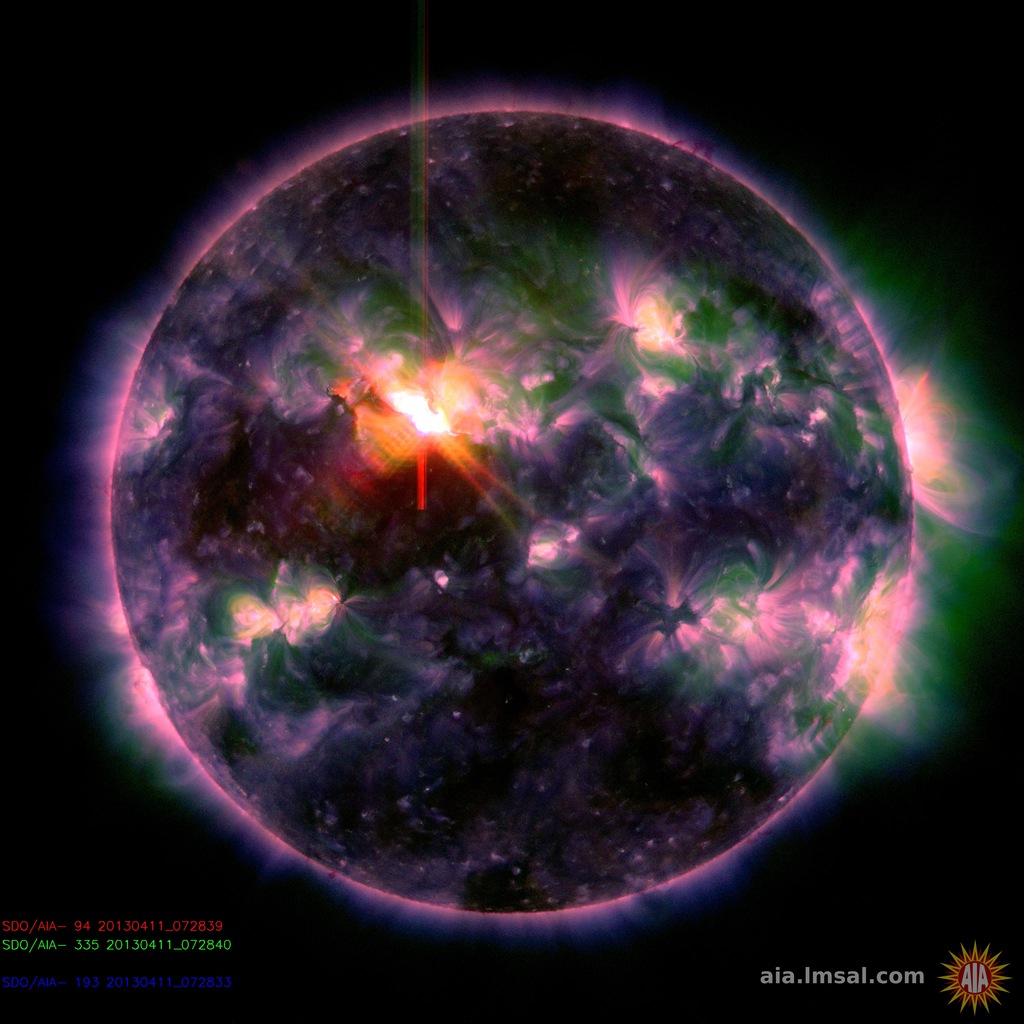Space Weather Alert - 12th April 2013
What Has Happened?
A large and energetic coronal mass ejection (CME) associated with an M6.5 (X-ray) solar flare erupted from near the centre of the solar disk yesterday morning. The solar flare peaked at 07.16UT with the CME appearing in SOHO/LASCO coronagraph imagery shortly after. Although the full halo CME was asymmetric and thus not fully directed towards the Earth, there is a significant proportion that is.
The estimated shock arrival time at the Earth's magnetic field could be anywhere between late on April 12th to early on April 14th, with the most likely during the morning (UT) of the 13th.
There is a strong possibility of MINOR to MAJOR geomagnetic storm periods following the arrival.
Enhanced auroral displays will be possible during local night time hours, depending on the size of the storm and the solar wind conditions at the time. This is most likely at high latitudes but also at lower latitudes depending on the strength of the storm and assuming clear dark skies.
Since the most likely arrival time is sometime on the 13th the best chance for viewing the aurora from the UK is the night of 13th/14th. Those further North will have the best chance with respect to the likely activity but this depends on the weather and if the skies are clear. Find out what the weather forecast is for your area at the UK Met Office site.
Sign-up to receive Geomagnetic Disturbance Alert emails.
Follow us on Twitter:
Follow @BGSauroraAlert for more occasional aurora alerts.
Follow @BGSspaceWeather for daily space weather forecasts.
Glossary
- BGS
- The British Geological Survey is one of the Natural Environment Research Council's Research Centres.
CME or Coronal Mass Ejection- The eruption of a portion of the outer atmosphere of the Sun into space, caused by rapid changes in its magnetic field. Often occurs along with a solar flare.
- Coronal Hole
- A region in the Sun’s outer atmosphere (corona) where hot material can flow unrestrained by its magnetic fields out into space.
- Filament Eruption
- An eruption of solar plasma (i.e. ions and electrons) associated with the upward movement of solar magnetic field lines into the corona. Filaments are usually dark against the bright solar disk but can appear bright (as 'erupting prominences') on the limbs of the Sun against the darkness of space. Filaments are often associated with CMEs.
- Flare
- Energy released by the explosive reorganisation of magnetic fields within the Sun's atmosphere.
- High Speed Stream
- A fast moving stream of solar wind, responsible for magnetic storms.
- Magnetogram
- The variation, minute by minute, of the strength and direction of the Earth’s magnetic field. Measured in units of nano-Tesla (for the strength of the field) or in degrees (direction of the field).
Solar Wind- The ever-present expansion of the Sun’s hot outer atmosphere into the solar system, which carries space weather within it.
Sunspot- A region of intense magnetic field in the Sun's visible outer atmosphere often associated with flares and CMEs.



